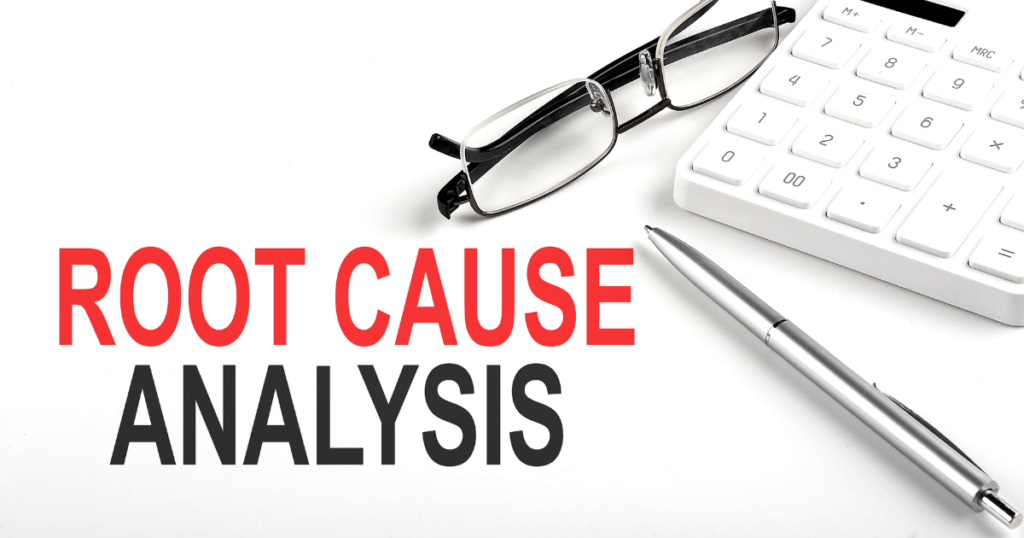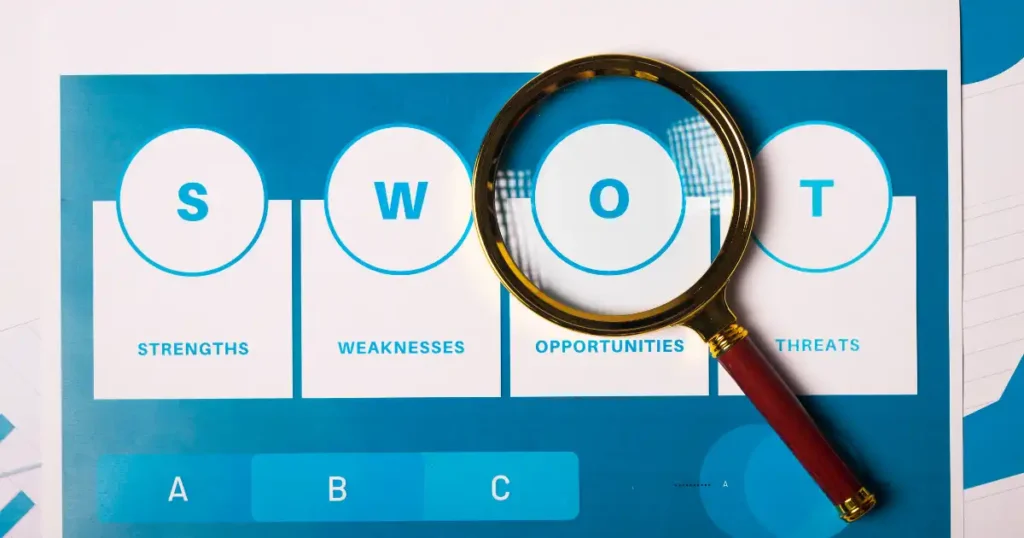Table of Contents
Businesses can always improve. Whether it is their processes, procedures, policies, people or technology, there is always room for improvement. However, the type of improvement deployed, how it is deployed and to what effect can and will vary greatly, depending on the approach taken and the needs of the business. Knowing what business improvement solutions are out there is just the first part. You need to confidently know which of these solutions are right for your business needs, and how to confidently understand this.
We will run through the top business improvement solutions available to you, identifying what they are, what they entail and the kinds of challenges they seek to address and outcomes they seek to deliver. This will hopefully give you the right level of insight to make informed decisions each and every time you need to deliver a business improvement.
Solution #1: Process Improvement

Process improvement is the type of business improvement that focuses on one key area, and it is in the name. The process. This type of business improvement is all about understanding how you can take a process from its current state and move it to a new and improved future state. The future state will be one which is leaner, has less waste, causes less issues, leads to higher quality outputs in a faster period of time, with happier colleagues and customers delivered along the way.
Process Improvement can take the following approach:
You firstly define the process you want to improve, identifying exactly what this process is called, the scope of this process (start and end) and the high level challenge you want to address.
You then get a team together (preferably those who work the process on a regular basis) and ask them to map out the process in full, end to end. This process mapping should take the form of a swim lane map or flowchart, and should show activities, departments involved, hand offs, decision points etc. Every activity that is conducted to get you from point A to point B should be mapped in that workshop.
Next you will analyse your process, conducting an analysis that enables you to see the value add and non-value adding steps of your process. These can be coloured red, amber and green (red for non-value add, green for value add and amber for necessary steps, those that are legal or governance requirements, for example). You want to be able to confidently see the waste and the opportunity within your process.
Once completed, you can then start to solution your improvements. This will involved workshops that see you thinking about all of the potential solutions and improvements that could be pursued, and mapping these on top of your process map to see if they are feasible. Once done, you can then work through these until you get your final set of solutions / improvements that you plan to take forward.
Finally, you can then deploy all of the improvements you have confidently identified as necessary for your process. These changes should lead to a process which can deliver its outputs faster, with better quality and with less issues, complaints or cost.
If you are seeking to reduce waste, improve operational and process performance, positively impact the quality of your outputs, products and services and get them to market quicker, process improvement could be the right business improvement solution for you to follow.
Solution #2: Continuous Improvement

Similarly as with process improvement, the type of improvement you will see here is in the name – continuous. However, unlike process improvement, we are not simply focusing on the process here, continuous improvement can be adopted and pursued on a more regular, continuous basis across a range of different areas. Whether you are looking to continually improve your people, processes, policies, procedures or technology, continuous improvement can help.
If your desired outputs of the [continuous improvement] Continuous Improvement – Leading Business Improvement work you deliver include happier customer, streamlined processes, better quality products and services, better trained and more engaged colleagues, better operational performance etc. you will be able to deliver such outputs using this approach.
Unlike process improvement, [continuous improvement] does have a number of methodologies within it which can be deployed as frameworks for continuous improvement, focusing your efforts into those approaches, utilising tried and tested tools and techniques to give you your desired outputs. In brief:
Total Quality Management
The TQM approach is defined as the improvement of product and service quality, as defined by the customer, by the continual improvement of that which delivers them, especially process. With this approach, you need to do some upfront work on the voice of the customer, understanding what quality looks like to them, and working back to ensure your operations can deliver that quality, especially through your processes. This effort is then repeated continuously for your products and services, constantly improving quality and ensuring your customer is satisfied.
Plan, do, check, act
The PDCA approach is defined as a cycle of improvement, repeated continuously to launch projects and deliver identified change and solutions. This approach is graphically represented as a cycle where you plan your change, test it, check that it has been effective and then deploy it in full. This cycle can be deployed to a range of areas of your business, whether a process, product or service. It is a simple formula that can be easily applied, continuously, and it is the approach most commonly associated with continuous improvement because of the quick nature of delivery you can see.
Theory of constraints
The TOC approach is defined as approach to identify the most important limiting factor that stands in the way of achieving a goal and then systematically improving the constraint until it is no longer the limiting factor. This approach is a precision approach, focusing specifically on that one area that is causing the problem and addressing it over and over until it is no longer an issue. This approach seeks to drown out the noise from other potential problems or causes and focus all efforts on one – speeding up this process. This can then be continually deployed for the other problem areas.
Lean
The Lean approach is a set of management practices to improve efficiency and effectiveness by eliminating waste. It is an approach that seeks to get you from point A to point B quicker, less manually and in a less wasteful manner. It seeks to increase the value adding steps in your operations and reduce the non-value adding steps, getting your products and services to market quicker, improving customer satisfaction and sales performance.
Six Sigma
The Six Sigma approach is all about improving performance by greatly reducing the probability that an error defect will occur. This approach is focused on reducing errors and issues, defects which can have a negatively ripple effect across your business. It is also focused on reducing the variation in your processes, making sure there is increased consistency in how and when your products get to market. It also focuses on increasing the stability of process (linked to variation) and capability, which ensures the products and services delivered at the end of the process are fit for purpose – the process is capable.
With these approaches, the key is in the frequency of delivery. If you want to continually improve (whether that be defects, waste, capabilities etc.) choose the approach which fits that need and continually deploy.
Solution 3: Root Cause Analysis

The biggest way in which root cause analysis is a business improvement solution is the insight it can give you to make informed decisions, empowering you to identify the right solutions, changes and improvements to make. Root cause analysis is an approach that can be deployed both reactively (when something has gone wrong) and proactively (to prevent something from going wrong in the first place). From a business improvement perspective, you can use it for either one. Indeed, proactively stopping things from going wrong in the future is helping you to improve your business of the future, you just haven’t got there yet. This is powerful.
To deliver effective root cause analysis, you need to get the right people into a room and run a root cause analysis workshop. In this workshop, you want to have those in the know, the people who have been / will be impacted by the errors and problems plaguing your operations. They will usually run the processes / teams in scope for the workshop. Once together, you will need to identify the problem(s) clearly, because only then can you identify the right fixes for the right problem. If you want to learn more about Root Cause analysis check out our fully updated course.
In the workshop, you will want to utilise the root cause analysis tools available to you to identify your causes. The most common ones for these types of workshops will include:
Fishbone Diagram
This tool should be used if you are looking to categorise your causes. The fishbone diagram tool asks you to describe your problem in one or two lines and then work back, categorising the potential causes that could sit underneath this problem. Categories here would include machine, materials, manpower, mother nature etc. (the terms are interchangeable, so mother nature is often now environment, manpower is often now people etc.)
5 Whys Diagram
This 5 whys diagram tool should be used one a handful of the issues, and will enable you to break down the problem into a series of whys before you can confidently identify the final root cause. This tool can also be used to land on a potential solution to you problem at the end, utilising all of the evidence presented in the previous whys to make an informed decision.
FMEA
A longer term tool, one that is often kept LIVE, the FMEA is all about documenting the failures in your operation, how this failed, the effects on your business and enables you to conduct an analysis on what needs to be done to avoid these errors from occurring in the future, as well as fixing those that are broken today. This is a popular tool to use proactively as you are building out new processes, products and service lines.
Once you have completed your workshop and have the knowledge and information you need available, you can make some informed decisions about the right solutions you need to take in order to fix your problems and improve your operational performance. If you want to stem such problems, improve customer / client experience and the quality of products and services, root cause analysis would be the right business improvement approach for you. If you are looking for a more in-depth understanding of FMEA then take a look at our course.
Solution #4: Cost reduction

A further business improvement solution you could seek to deploy is cost reduction. Cost reduction is one of those approaches that can be deployed in a range of ways, all with the same ultimate purpose – to reduce the cost of doing business from cost X to cost Y, with cost Y being lower than cost X by some margin.
It can often be the case that many organizations believe spending more money on products, services, people and processes is the way to improve their performance. Whilst this could be true, you need to ensure the money is targeted, you are clear on its return on investment and it leads to the outcomes you anticipate (i.e. increased sales, better performance, less complaints etc.) To get such outcomes though, more money is not always needed, and as organizations spend more, the chance of them wanting to reduce in the future increases.
There are a range of techniques (literally hundreds) you could deploy in order to save your organisation money, and one of the key ways from a business improvement perspective this can help depends on where the saved money goes. If you seek to reduce spending in certain departments by say, 5%, and this equates to $1 million, if you reinvest this money back into the business, you are highly likely to see a business improvement effect from this. This is not new money being spent, budgets have not had to rise to fund this $1 million, indeed it is just being redistributed from one part of your business (where it is not adding much value) to another part of your business where it can now add more value.
For example. You have a team of Secretaries and Administrators who are tasked with a lot of manual work, double keying, checking and filing. You want to make savings here for the benefit of the wider business. You identify 5 roles could be reduced (immediately, through natural attrition or people moving roles) and this would save you, all in, $200,000.
To make this happen, you need to automate large parts of this role which will cost $40,000, which you are able to successfully do. Not only does this save money and time here, but it can also act as a blueprint for the wider business to follow (ripple effect being even bigger savings to come). You then identify with the remaining $160,000 you will hire 2 new people into your Product Development Team, and spend what is left improving that teams processes, making them a bit more productive and efficient. This enables you business to begin working on new product lines you would not have had the capacity to develop before (because of budget constraints), but now you can. These products can then be sold in the market, generating you more revenue, without a penny more money being spent compared to the previous year.
You see, the techniques around how to deliver business improvement as a cost saving measure will vastly depend on what you need and how you seek to do it. Indeed, Six Sigma, Root Cause Analysis, Process Improvement – all of these techniques can help you to save money in some way, and so you may simply have “reduce the cost of this department by X” as one of your goals for those approaches. Whichever it is, reducing your business costs for the sake of reinvestment back into your business is a great improvement activity you can pursue.
Solution #5: Training & Upskilling

There are also a range of other business improvement techniques largely related to training and upskilling you could seek to deploy relatively quickly and easily into your business. These small changes all add up, and can lead to bigger, wider improvements overtime. Changes and improvements you can make to your business include, but are not limited to, the following:
- Upskilling and training of staff into certain qualifications or certifications.
- Upskilling and training of staff into business improvement techniques (like the ones listed) to empower them to make changes confidently and continuously going forward.
- Upskilling and training of staff to be able to root cause problems immediately, rather than simply reporting them and letting the, potentially fester and grow.
- Launch quality or improvement champion programmes, empowering people with the skillsets to not only deliver change, but to sell and champion it in the business.
- Launch mentorship programmes to empower more qualified and experienced members of staff to mentor juniors in the business to deliver good work, consistently.
- Reform your onboarding and training procedures to make them more robust and fit for purpose, learning the lessons of past experience and other organizations.
- Embed training and development into the professional goals of staff, reviewing this progress regularly and holding them to account.
All of these and more can help organizations to improve constantly, day in day out. Given that people make up businesses, they are the ones that need to be empowered to improve, to change and to reform confidently. Upskilling also leads to a reduction in the amount of work one person has to do, spreading the burden, reducing employee fatigue and enriching their engagement with the business.
Conclusion
When it comes to business improvement solutions, there are many on offer. From the way in which you can secure an improved business, to what you need to focus on, the outputs you want to see and the approach taken, business improvement is not a hard goal to achieve, you just need to be willing to think through clearly how and why. Once you get into the swing of delivering improvements across your business and see the huge rewards you can reap from doing this, it will become second nature.







